

HP 8568-8566 Spectrum Analyzer - Displaying Results
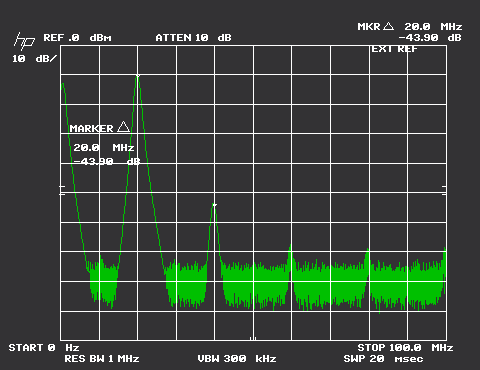 |
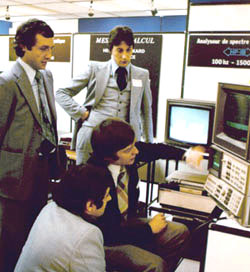 |
Demonstrating the HP 8568A with a 1310A large screen display (in 1978) |
Screen Dump of the HP 8568/66 Display,
Simple Analog Solutions :
There were various way to output the HP 8568/66 screen content to the outside world. The basic plan was to use the large-screen CRT display or X-Y recorder available on the market during the 8568/66 commercial lifetime. Typical examples could be any model of the vector CRT display in the 1330, and 1340 series, including a large choice of large screen displays like the 1310A, 1304A, 1311A, or 1317A.
The picture on the right shows such an installation that was the only way to make a demonstration to a large group during exhibitions in 1978.
For permanent record and archival of the spectrum analyzer display, the X-Y recorder was another solution which was completely managed by the 8568/66 internal processor. The picture below gives all the details for the connection of a recorder to the rear panel output of the 8568 or 8566.
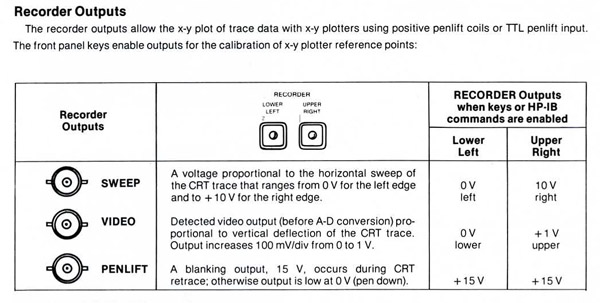 |
Screen Dump of the HP 8568/66 Display, the HP-IB Option :
The above analog solutions are quite difficult because plotters no longer serve in stand-alone applications. By far more powerful, the HP-IB option offers a direct digital data transfer of the spectrum analyzer screen display to a graphic plotter, and/or storage to a computer.
The simplest solution is to connect a plotter to the 8568/66 rear panel HP-IB connector. Any plotter using an HP-IB interface will be compatible. The early HP 7225A which was introduced at about the same time as the 8568A, is a good example. More recent plotters, like the 7440, 7445, or 7550, will function just as well, but only one pen will be used in case of multi-pen color plotter. The only thing to do, after adjusting the spectrum analyzer to display exactly what you want to see on the plotted sheet of paper, is to press the RECORDER "LOWER LEFT" button on the 8568/66 front panel. Plot time will depend on the quantity of information dumped from the spectrum analyzer, and on the speed performance of the plotter: the oldest the slowest, the newest the fastest as a general rule of thumb; maybe from 1 to three minutes.
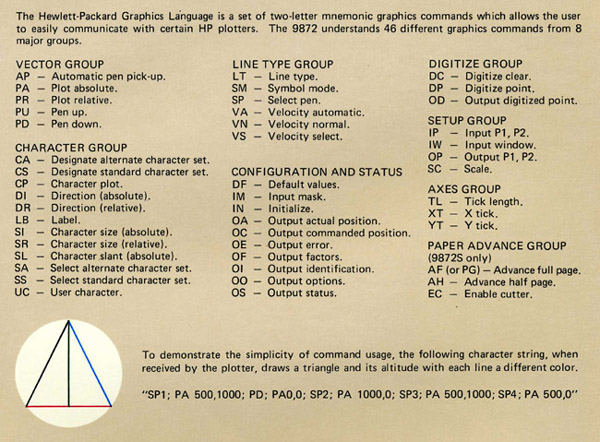 |
| A very short-form summary of the Hewlett Packard Graphics Language |
The picture below is a scan of a 8568B HPGL output, plotted on a A4 format sheet of paper. The main difficulty is to find a plotter, still working properly today, while locating fresh plotter pens is another problem.
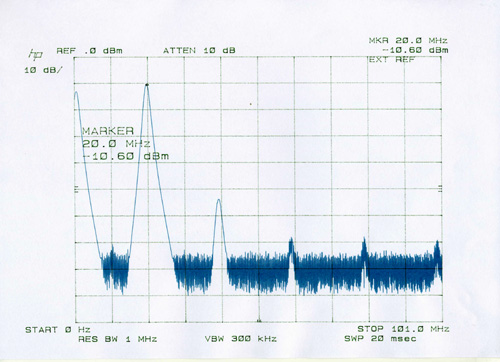 |
| A HP 8558B spectrum display plotted with a HP 7475A plotter |
The Fully Digital Solution :
By far the most convenient solution today, the 8568/66 HPGL output can be transferred to a personal computer through a GPIB interface. And, thanks to John Miles' Open-Source GPIB Toolkit, his 7470 intelligent HP-GL/2 plotter emulator will do the rest of the job for you, with a graphic picture result looking like this one below:
 |
| GIF Graphic File outputed from the John Miles 7470 Plotter Emulator Software |
John Miles' Open-Source GPIB Toolkit can be downloaded for free from his website, which is also a treasure trove of highly professional information about a variety of subjects like Phase Noise, Time-Frequency and Stability measurements, and more.
The 7470 Plotter Emulator Software is fully documented on John Miles' Web Site. Using the emulator is very friendly. A choice of output formats are available: GIF, BMP, TGA, or PCX, can be choosen for graphic image file storage. The HPGL data flow can also be saved in a file for further usage, even if the 8568 is no longer connected to the computer.
The only mandatory investment will be a GPIB interface. It could be a HP 82335 HP-IB interface installed in a vintage PC running Windows XP for example, or you can use a USB to GPIB interface plugged to a more modern tower or laptop PC. The Agilent Technologies 82357A/B USB-GPIB, or the National Instruments GPIB-USB-B will work fine. The driver and I/O libraries for both of these interfaces are downloadable for free from their respective manufacturers Web Sites.
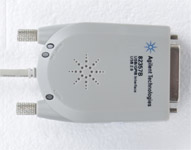 |
Agilent 82357B |
The Agilent 82357B USB-GPIB Interface
As of December 2013, the Agilent I/O Libraries Suite current release was the 16.3. Direct link to the Agilent download website is HERE.
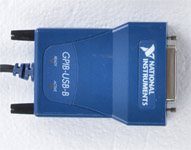 |
Agilent 82357B |
The National Instruments GPIB-USB-B Interface
As of December 2013, the National Instruments I/O Libraries Suite current release was the 3.1.1. The direct link to the NI download website is HERE.
Some Picture Dump Using the 7470 Plotter Emulator :
You will find below a short picture gallery of some 8568 displays dumped to the 7470 intelligent HP-GL/2 plotter emulator.
 |
| The 8568B 20 MHz calibrator output signal shown on a 0 to 100 MHz frequency span |
 |
| The 8568B 20 MHz calibrator output signal shown on a 2 MHz frequency span |
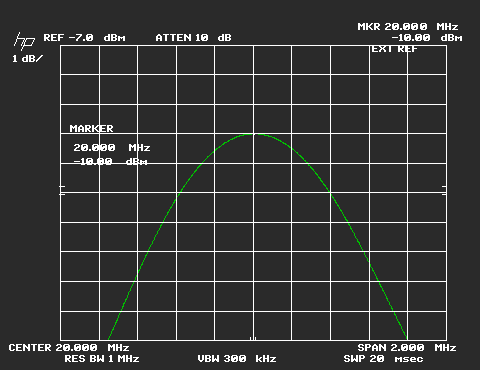 |
| Calibrating the 8568B reference level using the [recall] [8] key sequence |
| Measuring a 505 MHz passband filter with a 8568B and 8444A Tracking Generator |